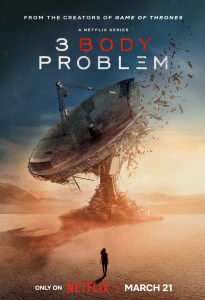





• Jeff Godsil on The Magnificent Seven.
• Mona Bowen on Extraordinary and The 3-Body Problem.
• The British Film Institute's new monograph on Point Blank.
-–––––––––––––––––––––––––––––––––––––––––––––––––-
There is a certain kind of writer who stands outside the general run of film writers, but who often comes up with compelling and interesting books or essays on film. Among them are Adam Mars-Jones, the novelist, Michael Wood, of the LRB, and of course, Geoff Dyer.
Geoff Dyer is the new master of book length single film studies, first with a book on Stalker, then on Where Eagles Dare and he has promised a volume on Point Blank. He might need to tear it up and start over, as the BFI has just published a monograph on Point Blank, written by Eric G. Wilson, and its 112 pages are packed with insights into the film, its making, and the times in which it was made.
Point blank begin life as a novel, The Hunter, credited to Richard Stark, but, in fact, written by Donald Westlake. Westlake – Stark continued to write more heist novels in the Parker series, There were approximately 24 Parker books, and even a few adaptations into graphic novels, or comic books, as we used to call them., and two or three of them were turned in the films, such as The Outfit, The Split, Slayground, and Payback, which starred Mel Gibson as “Porter,” and the later Parker, in what were ostensibly remakes or re-adaptation of Point Blank.
Director, John Boorman had come out of British television and made his feature filmmaking debut with Having a Wild Weekend, AKA Catch Me if You Can, a film focusing on Beatles – rivals the Dave Clark Five, a downbeat account of an off-season trip to a beach town under grim gray skies crowding your shoulders. The Point Blank project came Boorman's way via a special division of MGM, and he and his producer worked on the screenplay and eventually decided that Lee Marvin should play the character renamed Walker for the film. Marvin happened to be in London at the time shooting The Dirty Dozen, which would propel him into higher regions of Hollywood stardom then his earlier Oscar winning turn in the Western comedy Cat Balou.
Boorman moved his family to Los Angeles, further worked on the screenplay, sometimes with improvisational input from Lee Marvin himself who came up with numerous innovative ideas incorporated into the texture of the film. MGM was also making another film with Michelangelo Antonioni called Zabriski Point, and the two films coincidentally share a fascination with Los Angeles, its weather and architecture, as Mr. Wilson point out in his monograph.
In its cinematic form, Point Blank begins hypnotically in media res at the tail end of a heist gone wrong, at least wrong for Walker, who is betrayed by his wife and best friend and shot and left at the heist site, which happens to be Alcatraz prison. What follows is Walker’s implacable pursuit of the funds owed him, which takes him back to Los Angeles to track down his wife played by Sharon Acker and his best friend, played by John Vernon, and eventually up a crime organization’s food chain until he comes within reach of his money. Marvin’s character is not unlike an earlier portrayal from 1964 as one of the title characters in the Don Siegel Hemingway adaptation The Killers.
Eric Wilson is Professor of English at Wake Forest University, USA. His previous books include Secret Cinema: Gnostic Vision in Film (2006), a book on David Lynch, and has appeared in The New York Times.
The first chapter, “The Grail” explains how the project came about, the second chapter, “Minimalism,” charts the evolution of the screenplay, and the influence of Alain Resnais and Harold Pinter.
Chapter three, “Stoic and Clown,” focuses on Marvin and the casting in general of Angie Dickenson, Vernon, Carroll O’Connor and others. And with Chapter four, “Los Angeles,” he analyzes Boorman's approach to the city itself and its architecture, and registers it as the birthplace for subsequent films such as Zabriski Point and is contrasted with the set of the abandoned Alcatraz prison in San Francisco, metal and cold, machinery and enclosures, which he then cites as a visual motif throughout the rest of the film. Here, too, he also covers the cinematographer Philip Lathrop, the set designers, and the score provided by Jerry Mandel. He writes:
In chapters Five through eleven, the author walks us through the film moment to moment, point by point, and finally in a chapter about the afterlife of the film, he describes the post-production, the ad campaign and its eventual cult status and various re-releases.
The book is rounded out with foot notes, the credits, and a bibliography, from which the reader could compile a nice separate anthology of essential essays on Point Blank.
He concludes:
This is terrific stuff, but it also makes me await the Geoff Dyer version even more.
- KBOO


